A comfortable and stylish staircase inevitably becomes the dominant decoration of the interior. But trying to build a beautiful structure in the house, do not forget about the safety of moving between floors.
For this purpose, most interfloor structures are equipped with handrails that protect from falling and facilitate climbing up. It is especially important to take care of the safety of the owners in whose houses children and elderly people live.
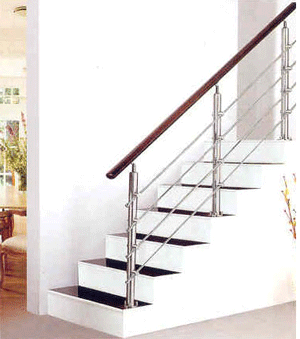
Stair rails are made from many materials:
- wood,
- concrete,
- metal,
- even glass to fill the space between the uprights.
But stainless steel is considered the best of them all.
Benefits of stainless steel
Stainless steel stair railing is:
- Practicality: the material does not corrode and does not need special care;
- Durability: stainless steel retains its original appearance for a long time, it does not need to be painted or processed with special means;
- Versatility: steel is used both inside and outside the premises, it fits equally well into any style of interior - from neo-eclecticism to high-tech;
- And one more important advantage of the material is its affordable price.
Types of stainless steel surfaces
Currently, there are two types of stainless steel surfaces on the market that are equally popular with the consumer:
- Polished steel, recommended for use in crowded places, outdoors, in an appropriate interior style;
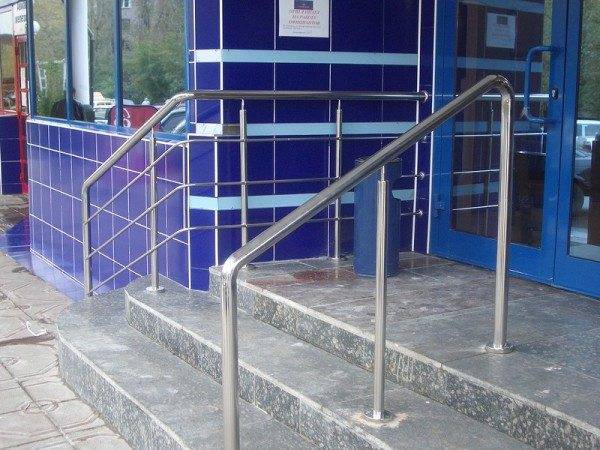
- Brushed steel, also called satin, is more susceptible to dirt and requires periodic cleaning.
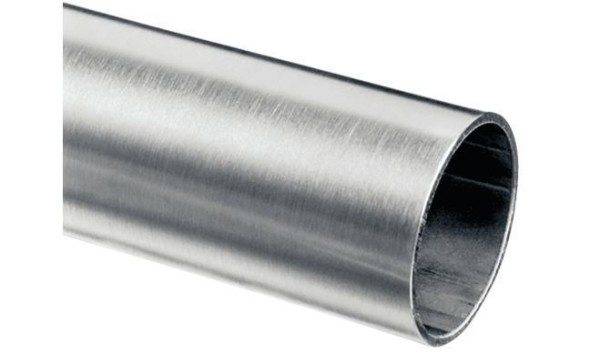
Attention!
With frequent use of a matte stainless steel fence, the surface wears out and turns black.
Therefore, you should not neglect the care products for such products.
Both types of surfaces do not know what is corrosion, scratches, fingerprints do not remain on them. Stainless steel stair rails, railings and balustrades are sometimes used in the most adverse conditions and help builders solve the most unexpected and difficult tasks..
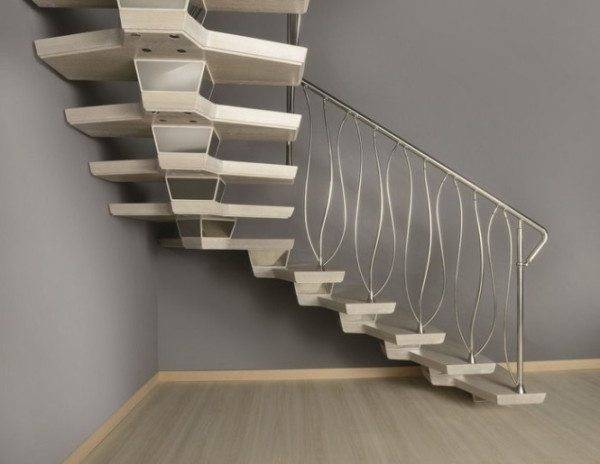
Which is more practical - buy a modular system or make a fence yourself
Many modular systems are now on sale that are designed to be assembled by hand. The modular stainless steel stair railing includes assembled balusters (posts), connectors (hinged or fixed) and railings. The system is also accompanied by instructions that allow even an amateur to cope with the installation.
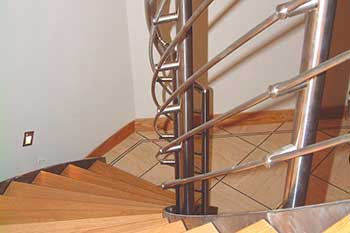
If you are not a supporter of ready-made solutions, and the flight of your imagination is limited by the standards of a modular system, you can try to make a stainless steel stair railing yourself. To do this, you need to find out some information about the principles of welding stainless steel, installation features and the requirements of GOSTs and SNiPs for interfloor structures.
Welding
Stainless steel parts are welded in two main types of welding:
- Semi-automatic. This type is used less often, since its main drawback is a huge amount of small splashes that can burn through or leave non-removable traces even on surfaces resistant to aggressive influences such as tiles or stone;
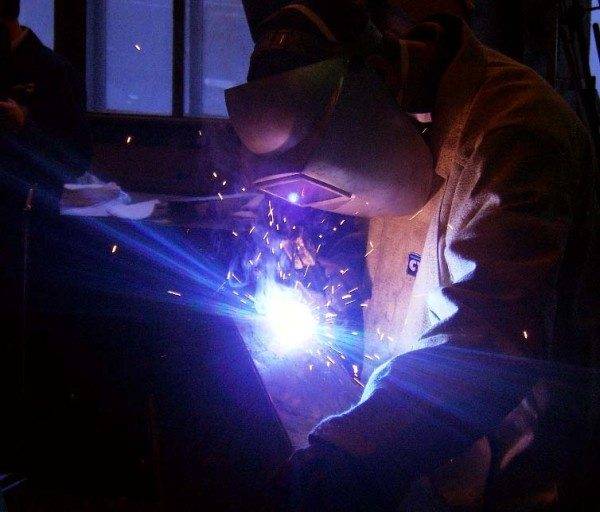
- Argon arc welding. Using a special tool avoids those very splashes.In addition, the seam after TIG welding is more accurate and more workable.
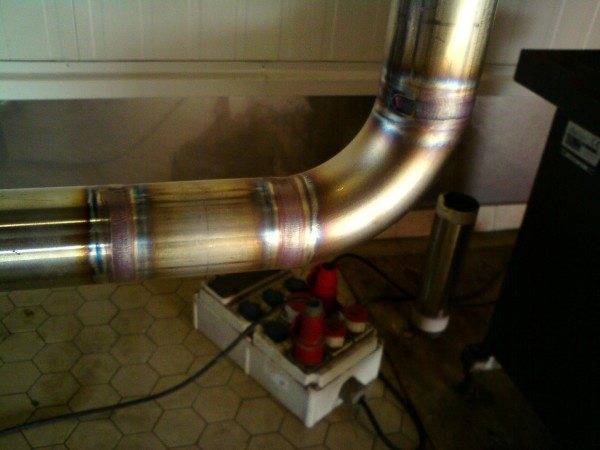
The weld seam must be cleaned with abrasives of various grain sizes and polished with polishing pastes.
Installation of the fence and compliance with safety requirements for lowering and lifting
Stair railings, first of all, should serve the safety of use of the structure, aesthetics is a secondary matter. All norms and requirements for fences are set out in GOST 25772-83.
Let's dwell on the main points:
- The height of the fence should vary from 90 cm to one meter;
- Racks (balusters) are installed at a distance of 60-70 cm from each other (through a step). Racks are attached to a step 5-10 cm from the edge, or to the end of the step, if there is more than 70 cm between them;
- The space between the balusters is filled in one of the following ways:
- Classic - with the same racks installed vertically or at an angle;
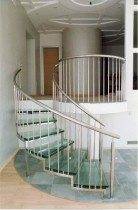
- Rigelny. Crossbars or handrails - horizontal metal rods, attached to the posts parallel to the handrails;
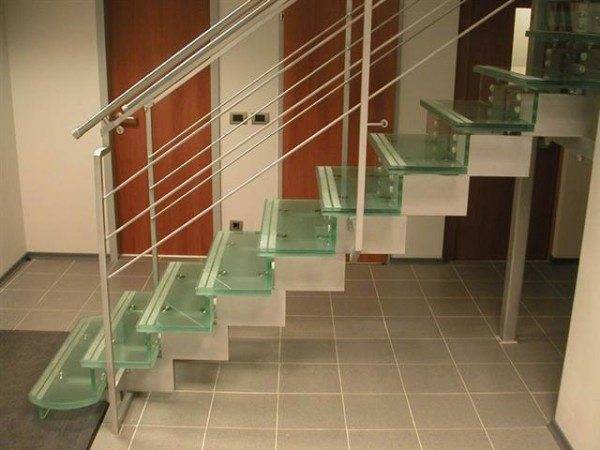
- Solid panels. Usually, special tempered glass is used for this.
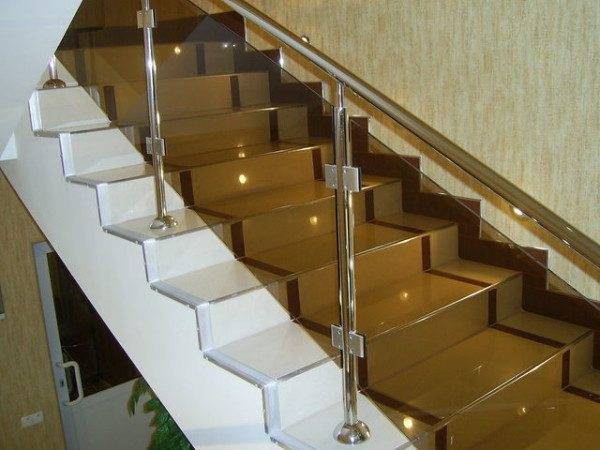
- The barrier structure must withstand a load of 100 kg per meter;
- The handrails should have a rounded end and protrude 25-35 cm beyond the steps;
- When attaching the handrail of the stairs to the wall, it is necessary to retreat from it 7-10 cm. Racks (balusters) in such cases are not needed, they are replaced with special brackets, cast or hinged. The latter is convenient for adjusting the slope of the handrail;
- The railing should be continuous and smooth with a cross-sectional area of 5 cm or more.
Some helpful tips
- In places where the handrails are bent and the height difference, the racks cannot be installed;
- If the stair treads are tiled, the diamond drill will slide off without marking;
- It is advisable to close the crossbar joints with special fittings.
Summary
As you can see, stainless steel is a really convenient and versatile material used for stair railings and meets all safety requirements. Effective appearance, excellent consumer properties and reasonable price only add to its attractiveness.
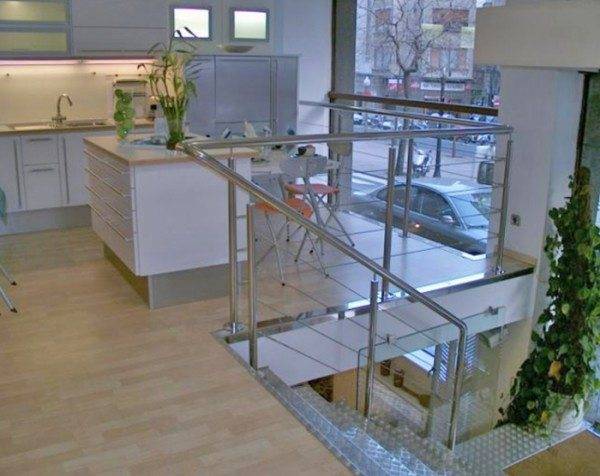
We told you about the features of the installation of stainless steel stair railings. The video in this article is just as helpful. We hope that your staircase will be stylish and safe thanks to the steel frame.







We have such prefabricated railings on the stairs at home, although the handrails are made of plastic under a tree. Very cozy, no office. They have been standing for 10 years, until they pulled out like. Considering that the kindergarten is growing at home. True, on the last step, the baluster fasteners loosen sometimes, I tighten the bolts periodically. Not cheap I must say. We gave it for our 3 meters about 20,000 rubles 10 years ago. but now, in general, they probably stand.